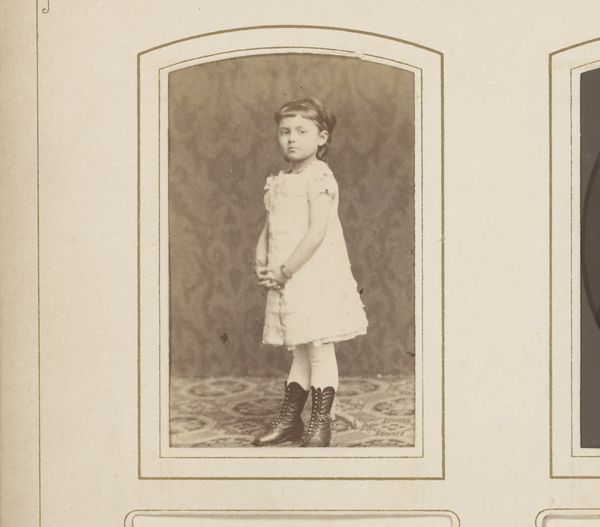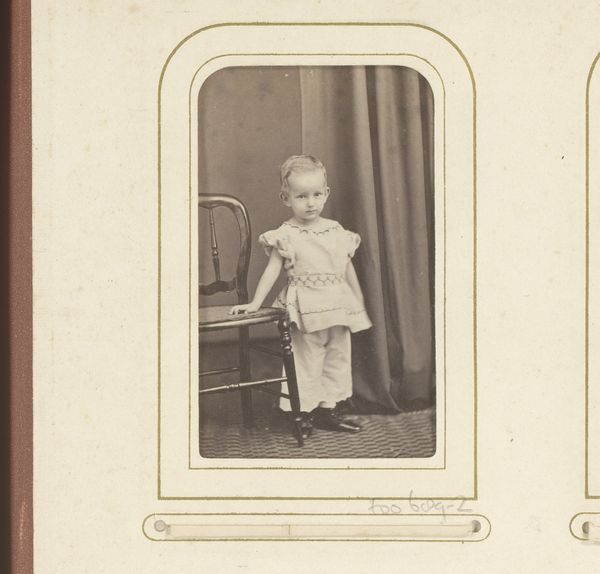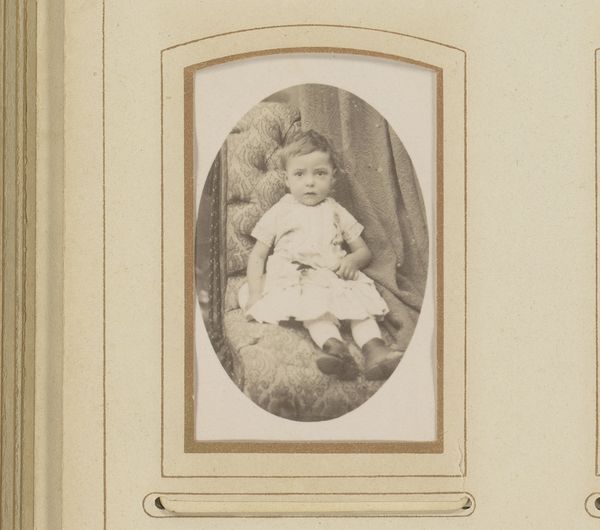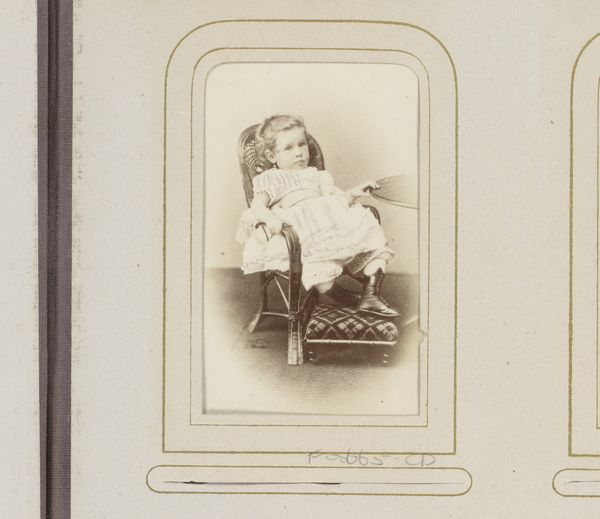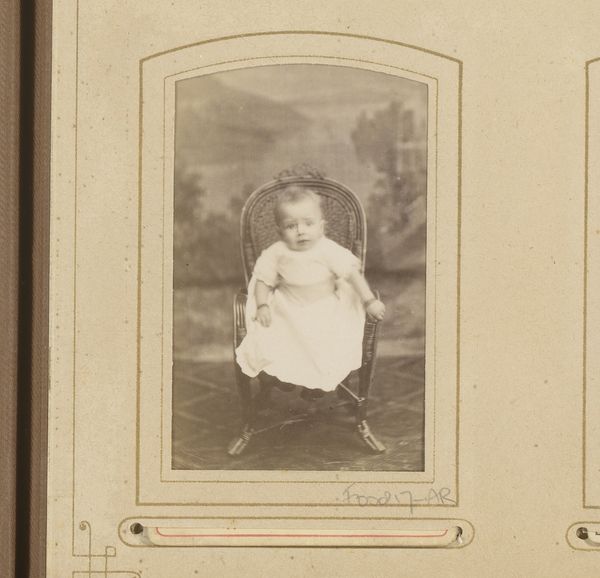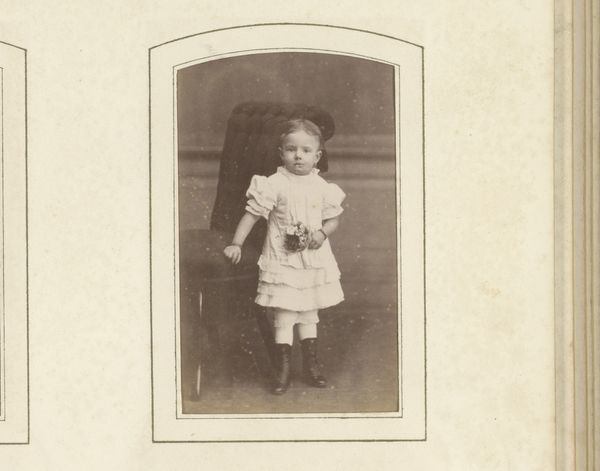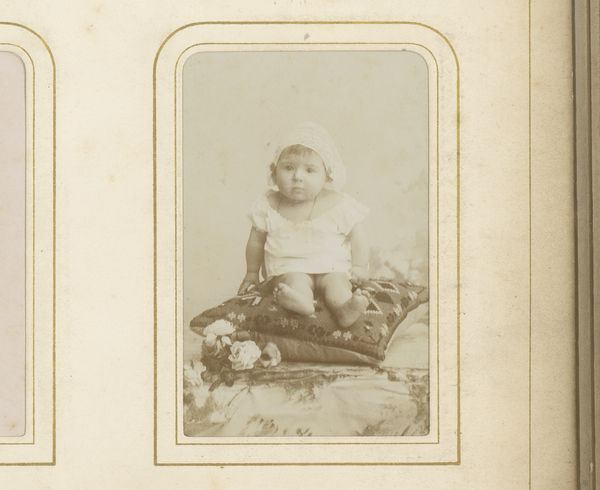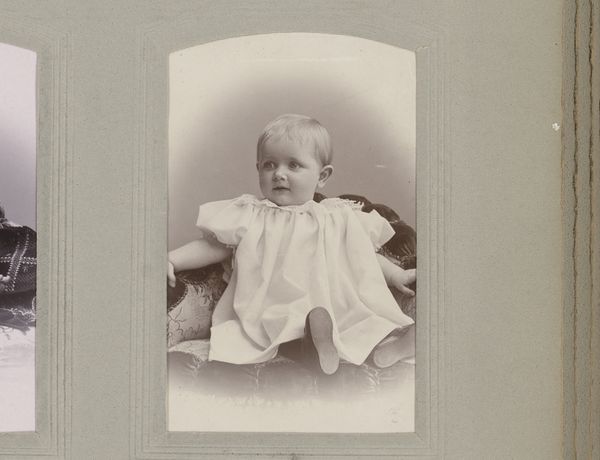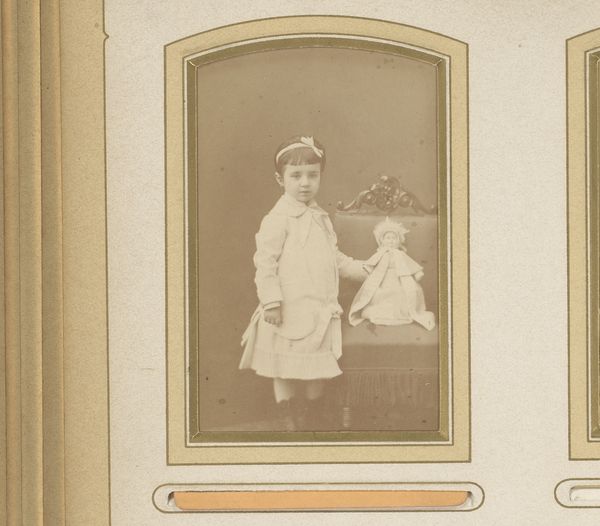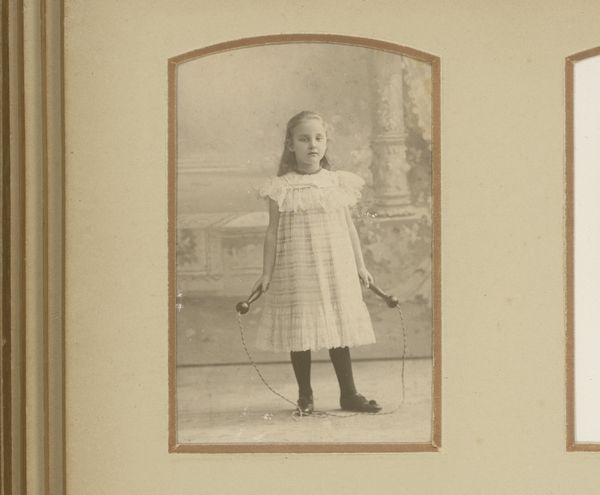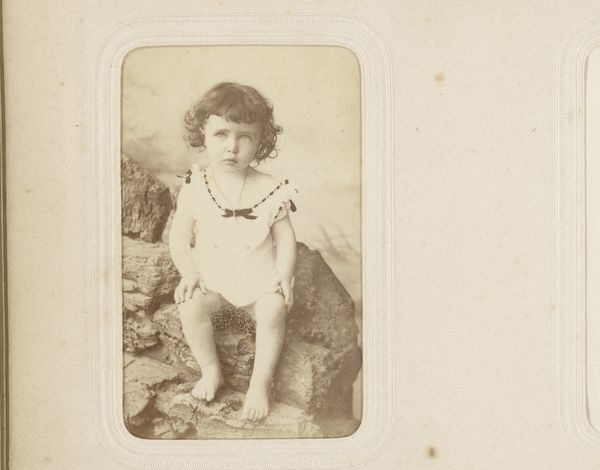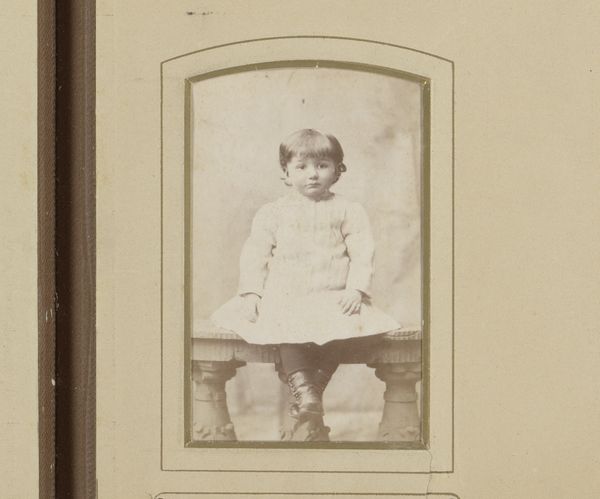
#
aged paper
#
light pencil work
#
wedding photograph
#
photo restoration
#
retro 'vintage design
#
archive photography
#
historical photography
#
old-timey
#
yellow element
#
19th century
Dimensions: height 87 mm, width 53 mm
Copyright: Rijks Museum: Open Domain
Curator: This image, simply titled "Portret van een staand jong meisje" or "Portrait of a standing young girl", dates from sometime between 1900 and 1920. There’s a quiet, unassuming beauty about it. Editor: Yes, she's just a wisp of a girl. She looks like she’s wandered in from a dream – those eyes hold an incredible stillness. I’m immediately drawn to the composition – the soft lighting and faded tones seem to focus entirely on the figure’s geometry: The simple dress, the symmetry of the puffed sleeves… It’s beautifully balanced. Curator: The photograph feels deeply personal, doesn’t it? Almost as if we’re intruding on a private moment frozen in time. I wonder who she was, what her life was like… It’s difficult to ignore the yellowing of the aged paper – like time itself is imprinted on the image. Editor: Indeed. And from a formalist perspective, this "aged paper" or discolouration functions almost as an additional layer of texture and meaning. These "flaws" offer a stark commentary on the passage of time and the inevitable decay of physical matter. The effect almost abstracts the sitter’s form. Curator: That’s beautifully put. It’s interesting how something considered a flaw can actually deepen the experience, isn’t it? This isn’t just a historical photograph, it’s an archive of light and shadow playing across a child’s face, a narrative told through subtle gradations of tone. I feel a pang of sadness and… well, tenderness. Editor: The light pencil work adds to the sense of intimacy. There’s no flamboyance here, just a gentle, meticulous layering. In viewing we should note how her gaze avoids ours, adding to the solemnity. Curator: So true. A direct gaze might shatter the fragile beauty. Instead, she allows us to contemplate… loss, memory, history, all framed within that aged border. I imagine this would be the picture of someone’s cherished childhood memory. Editor: Ultimately it's this very quietude and visual constraint that allows the work to speak volumes about temporality and our relationship with the past. I will take away her gaze—quiet as it is.
Comments
No comments
Be the first to comment and join the conversation on the ultimate creative platform.

